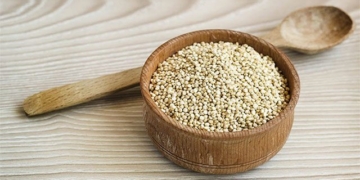Seasonal influenza caused by the A/H1N1 strain is an acute infectious disease that tends to be more severe in individuals with chronic illnesses.
Regarding the A/H1pdm strain, a representative from the Department of Preventive Health (Ministry of Health) stated that this is a common seasonal influenza strain. This influenza virus was first identified during the 2009 influenza pandemic, hence the name pandemic (pdm).

Treating patients infected with A/H1N1 influenza at a healthcare facility. (Illustrative photo)
According to the Department of Preventive Health, seasonal influenza caused by the A/H1N1 strain (also known as swine flu) is an acute infectious disease that spreads through sneezing, coughing, and direct contact with contaminated objects, subsequently leading to infection via the respiratory tract. In addition to the A/H1N1 influenza virus, other main strains that cause seasonal influenza include A/H3N2, influenza B, and influenza C.
Seasonal influenza is prevalent worldwide. According to WHO estimates, there are approximately 1 billion cases of illness each year, including 3-5 million cases of severe illness, with around 290,000 to 650,000 deaths.
In Vietnam, there are still between 600,000 and 1,000,000 reported cases of seasonal influenza annually, with cases recorded throughout the year. The national surveillance system for acute viral pneumonia continues to report cases, with about 10% of influenza-positive samples identified as the A/H1N1 strain.
Seasonal influenza usually has mild symptoms, but it can also lead to severe and dangerous complications in individuals with chronic cardiovascular and respiratory conditions, immunocompromised individuals, the elderly, children, and pregnant women; the disease can cause severe pneumonia and multiple organ failure, potentially leading to death.
To proactively prevent seasonal influenza, the public should follow these guidelines:
- 1. Cover your mouth and nose when coughing or sneezing, preferably with a cloth or tissue, or your elbow, to reduce the spread of respiratory secretions.
- 2. Wear a mask in crowded places and on public transport; regularly wash hands with soap and clean water or use hand sanitizer (especially after coughing or sneezing). Do not spit indiscriminately in public places.
- 3. Limit contact with individuals who are ill with influenza or suspected cases when unnecessary.
- 4. Get vaccinated against seasonal influenza.
- 5. Maintain a healthy lifestyle; consume a nutritious diet to prevent influenza virus infection; increase physical activity to enhance health.
- 6. If you experience symptoms such as cough, fever, runny nose, headache, or fatigue, do not self-test or purchase home treatment medications; instead, contact a healthcare facility for timely consultation, examination, and management.




















































